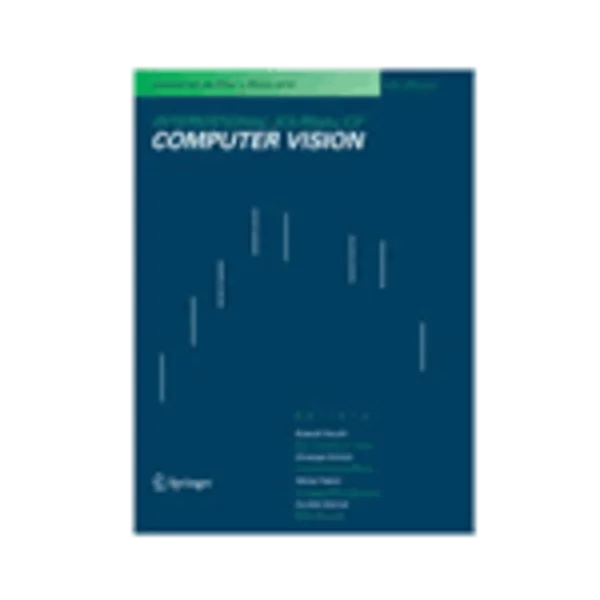-
a self-training approach for visual tracking and recognition of complex human activity patterns
جزئیات بیشتر مقاله- تاریخ ارائه: 1392/07/24
- تاریخ انتشار در تی پی بین: 1392/07/24
- تعداد بازدید: 1007
- تعداد پرسش و پاسخ ها: 0
- شماره تماس دبیرخانه رویداد: -
automatically observing and understanding human activities is one of the big challenges in computer vision research. among the potential fields of application are areas such as robotics, human computer interaction or medical research. in this article we present our work on unintrusive observation and interpretation of human activities for the precise recognition of human fullbody motions. the presented system requires no more than three cameras and is capable of tracking a large spectrum of motions in a wide variety of scenarios. this includes scenarios where the subject is partially occluded, where it manipulates objects as part of its activities, or where it interacts with the environment or other humans. our system is self-training, i.e. it is capable of learning models of human motion over time. these are used both to improve the prediction of human dynamics and to provide the basis for the recognition and interpretation of observed activities. the accuracy and robustness obtained by our system is the combined result of several contributions. by taking an anthropometric human model and optimizing it towards use in a probabilistic tracking framework we obtain a detailed biomechanical representation of human shape, posture and motion. furthermore, we introduce a sophisticated hierarchical sampling strategy for tracking that is embedded in a probabilistic framework and outperforms state-of-the-art bayesian methods. we then show how to track complex manipulation activities in everyday environments using a combination of learned human appearance models and implicit environment models. finally, we discuss a locally consistent representation of human motion that we use as a basis for learning environment- and task-specific motion models. all methods presented in this article have been subject to extensive experimental evaluation on today’s benchmarks and several challenging sequences ranging from athletic exercises to ergonomic case studies to everyday manipulation tasks in a kitchen environment.
مقالات جدیدترین رویدادها
-
استفاده از تحلیل اهمیت-عملکرد در ارائه الگوی مدیریت خلاقیت سازمانی و ارائه راهکار جهت بهبود
-
بررسی تاثیر ارزش وجوه نقد مازاد بر ساختار سرمایه شرکت های پذیرفته شده در بورس اوراق بهادار تهران
-
بررسی تأثیر سطح افشای ریسک بر قرارداد بدهی شرکت های پذیرفته شده در بورس اوراق بهادار تهران
-
بررسی تأثیر رتبه بندی اعتباری مبتنی بر مدل امتیاز بازار نوظهور بر نقد شوندگی سهام با تأکید بر خصوصی سازی شرکت ها
-
تأثیر آمیخته بازاریابی پوشاک ایرانی بر تصویر ذهنی مشتری پوشاک ایرانی (هاکوپیان)
-
ارزیابی عملکرد حمل و نقل ریلی ایران در مقایسه با برخی کشورهای جهان به روش dea
-
کاربرد بسترهای نی زار در تصفیه پساب های صنعتی و بهداشتی (مروری)
-
چطور می توانیم در تدریس زبان انگلیسی مدرس موفق تری باشیم؟
-
بررسی عملکرد گسل کته در شمال شیراز (کمربند زاگرس چین خورده)
-
development of biocompatible fluorescent gelatin nanoparticles for cell imaging applications
مقالات جدیدترین ژورنال ها
-
مدیریت و بررسی افسردگی دانش آموزان دختر مقطع متوسطه دوم در دروان کرونا در شهرستان دزفول
-
مدیریت و بررسی خرد سیاسی در اندیشه ی فردوسی در ادب ایران
-
واکاوی و مدیریت توصیفی قلمدان(جاکلیدی)ضریح در موزه آستان قدس رضوی
-
بررسی تاثیر خلاقیت، دانش و انگیزه کارکنان بر پیشنهادات نوآورانه کارکنان ( مورد مطالعه: هتل های 3 و 4 ستاره استان کرمان)
-
بررسی تاثیر کیفیت سیستم های اطلاعاتی بر تصمیم گیری موفق در شرکتهای تولیدی استان اصفهان (مورد مطالعه: مدیران شرکتهای تولیدی استان اصفهان)
-
محاسبه کتاب فرهنگ و تمدن اسلامی در قم قرن سوم هجری، تاریخ قم از 182 تا 420، تاریخ محلی قم از ورود اسلام تا سقوط ال بویه
-
ایقاع منبعی نوین برای تشکیل شرکت: چالش ها و راهبردهای تئوری شخصیت حقوقی با عضو واحد
-
برنامه ریزی و سیاست گذاری توسعه صنعت گردشگری بر پایه ایفای نقش ستون های دولت محلی کارآمد در ایران
-
ویژگی های جامعه اخلاقی ایده آل از منظر مفسر بزرگ آیت الله جوادی آملی
-
experimental study on the structural behavior of cast in-situ hollow core concrete slabs




سوال خود را در مورد این مقاله مطرح نمایید :